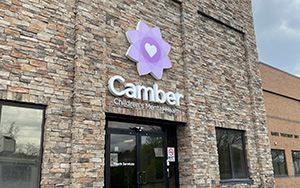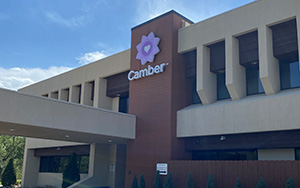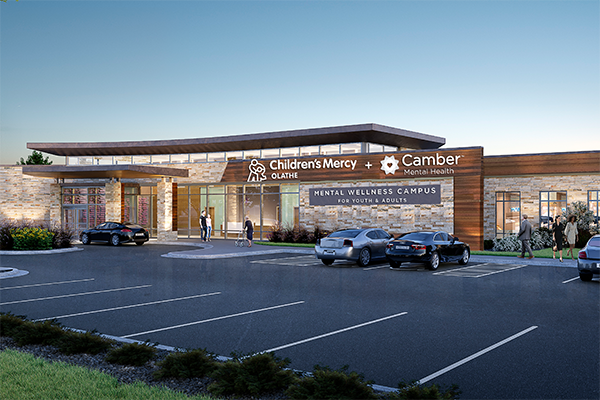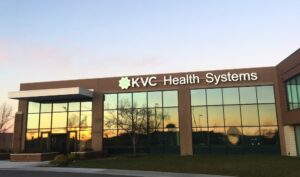A Look at Health Care Innovation & Technology

*Photo from The Kansas City Business Journal by Andres Grumke
With so much of the face of health care changing each year, The Kansas City Business Journal’s publisher Stacie Prosser hosted a panel of experts from the greater Kansas City area for a discussion around “Health Care Innovation in a Time of Uncertainty.” The panel of experts included members from KVC Hospitals, Blue Cross and Blue Shield of Kansas City, Engage Mobile Solutions, Children’s Mercy, Pulse Design Group and JE Dunn Construction. James Roberson, Vice President of Program Services for KVC Hospitals, participated in the panel discussion and shared his views on how technology and innovation are impacting health care. Roberson’s responses can be found below and the full article including all of the panelists’ responses can be found here.
Stacie Prosser’s Question: How can we use technology to improve health care outcomes?
Roberson: When we think of health care outcomes, it’s really about the right person, the right place, and the right intervention. Our thought around technology is connecting patient information systems with our clinical decisions. An electronic health record is the foundation, but then we’ve layered tools, apps, interfaces and dashboards. Our clinicians now have more information than they’ve ever had.
Most of our clinicians now understand it. They see a diagnosis, and they know where to go to get information. It’s not just about documenting. It has taken us a long time to get here. But when we can more accurately and quickly identify what patients need and when they need it, then we’re able to get much better outcomes.
Q: What innovations are changing how systems with multiple facilities deliver care?
Roberson: From KVC’s perspective, it definitely rings true that it’s not just about the batch services they provide. We ask our patients to try to explain their experience in four to five words. I use IKEA as a great example when we talk about how we want our consumers to move through care. We can create different experiences in a very purposeful way. The goal is to help identify what are those meaningful four or five words. In the behavioral health field, that’s extremely important because psychiatric hospitalization is a hard thing to describe. We want them to leave feeling like their experience was purposeful and meaningful and that they grew from it.
Our job is to use facilities to do this. When they walk in, those first few experiences are the lasting ones, and they will allow them to better engage in care in the future. If they really need help, they’ll seek it instead of waiting until it’s way downstream. It also gets them engaged, and they try to find other ways to take their experience and new acquired tools home, which is ultimately the goal, especially in behavioral health.
Q: What is patient-focused care and how does innovation play a part in that?
Roberson: As a behavioral health company, we are in conversations with medical providers throughout the city more than ever before. Ten years from now, we’re not going to talk about medical care without talking about behavioral health because all the major leading causes of death have behavioral components. Once we get to a place where we can merge these and they aren’t two separate silos, we can meet all the patient’s needs. We also have to take into consideration the social determinants that led patients to this place and address those. And in our younger populations, we have to address behavioral health components to prevent chronic illnesses upstream.
Q: Can you talk about wearables? It would seem that they are a huge part of behavioral modification.
Roberson: One of the strategies that we tried to use is to create a narrative. Technology can help us create a narrative and educate consumers in real time using smartphones about what health is and how we achieve it. If walking reduces your need for insulin, then you need to know that narrative, understand the science behind it and then get real-time feedback that fits directly into the narrative.
It’s difficult to say: “Here’s your problem. This is what you need to do to fix it.” We’re using a lot of neuroscience discussions and pictures of the brain to help patients understand where coping develops within the brain. There are some great virtual reality apps now on your phone where you can see how different parts of the brain work. All of our patients don’t have to be neuroscientists, but they really need to understand where the foundation is for these skills. Then, we have to actively engage them in that skill-building to reinforce that lessen. We have to show them the positive outcomes that will result from the skills they are building.
Q: One trend we’re seeing in health care is consumerism; people have a lot of choices available to them. I’m sure it affects each of your organizations.
Roberson: The consumerism piece to that used to be that you were diagnosed with a condition and therefore you got this treatment. That’s how consumers explained medical care. I had this happen, so I had to go through this. Now, patients are interfacing with their health providers all the time. We’ve even seen pilot studies in the United States — they call it the Uberization of health care — in which patients had complete control over when, how and where they received their health services. The more upstream we can get and the more constant we can be in our interaction, the more loyalty we can create for the health care company.
Q: What would you say from the payer perspective?
Roberson: Over the next 10 years, we will have a better understanding of the health of various populations within various areas. We’re getting closer. Today, we know by zip code in the Kansas City area which groups are most at risk for negative health outcomes. But then we also need to be able to drill that down into specific ways that we can focus on community health and population health and make funding decisions based on that same data. Instead of a micro hospital in Shawnee, for example, maybe we can build one in downtown Kansas City, Kansas where access to care is so much different. If we can start attaching what we know about health data and specific populations to services reimbursement and innovation in care, then we can really start to change some of the determinants for health.
Q: We’re in this kind of waiting period now with the national health care plan. How is that impacting or delaying any decisions for your organizations?
Roberson: We want to make sure that our consumers achieve the best possible outcomes. We know that prevention is part of that. As things change, our focus is to be very agile and not afraid to innovate and try new things. Sometimes you have to shift where you seek funding. You have to partner very quickly. I think we have to do it together. The biggest push is just getting out there and making sure that we’re getting as much done as we can, and we can’t let it delay care. Much of what we do falls on the safety-net side, so we’re going to see the consumers either way. It’s either see them downstream or upstream, so we’re trying to get other areas to also focus on prevention upstream.
To learn more about innovations at KVC, visit our neuroscience initiative webpage at www.kvc.org/brain.





